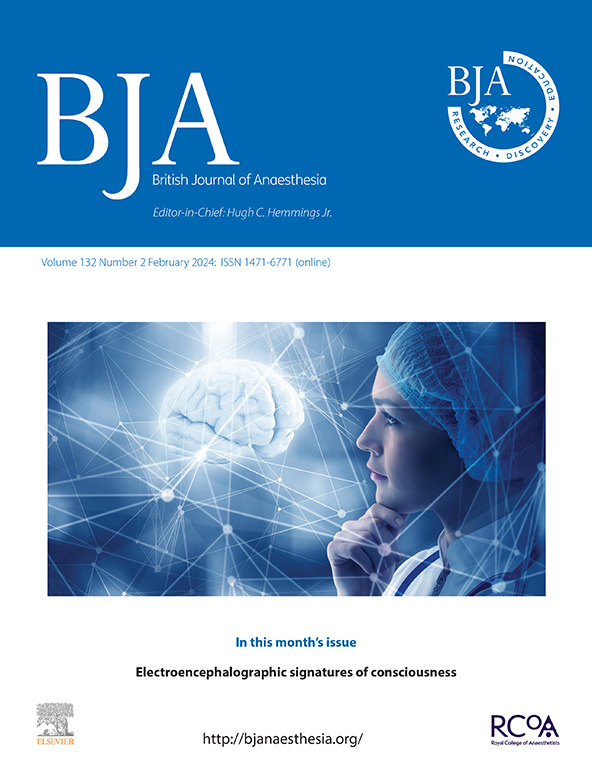临终手术患者的姑息预后工具:系统回顾。
IF 9.1
1区 医学
Q1 ANESTHESIOLOGY
引用次数: 0
摘要
背景:在生命末期确定手术患者(EOL)是整合姑息治疗和围手术期实践的第一步。姑息预后工具(PPTs)是从姑息治疗中建立的框架,用于评估早期死亡风险的患者。我们进行了一项系统的综述,调查了成人手术人群的PPTs,它们在手术决策中的作用,以及它们与围手术期结果的关系。方法进行前瞻性注册系统评价(PROSPERO注册号:CRD42023411303)。我们检索了Ovid MEDLINE、Ovid EMBASE和Cochrane CENTRAL (Wiley)数据库中调查手术患者PPTs的研究。主要结果是决定进行手术;次要结局包括死亡率、生活质量、姑息治疗咨询和EOL文件完成情况。摘要筛选、全文审查和研究质量评价由两位作者独立完成。由于研究异质性,结果是叙述性综合的。结果本综述纳入了7项研究,评估了4种不同的pts。研究表明,12-61%的手术患者在EOL。使用疾病阶段、轨迹方法或两者同时使用PPT确定处于EOL的患者住院和12个月死亡率增加。由于相互矛盾的结果,对决定进行手术的影响是不确定的。姑息治疗转诊和EOL文件完成率在EOL手术患者中<15%。没有研究描述患者报告的结果。结论姑息性预后工具在术前评估中具有重要的应用价值。未来的研究应侧重于术前临终评估和患者报告的结果,如生活质量、决策满意度和无残疾生存。本文章由计算机程序翻译,如有差异,请以英文原文为准。
Palliative prognostic tools in surgical patients at the end of life: a systematic review.
BACKGROUND
Identifying surgical patients at the end of life (EOL) is the first step in integrating palliative and perioperative practices. Palliative prognostic tools (PPTs) are established frameworks from palliative care that assess patients at risk of early death. We conducted a systematic review investigating PPTs in adult surgical populations, their role in surgical decision-making, and their association with perioperative outcomes.
METHODS
A prospectively registered systematic review was performed (PROSPERO registration: CRD42023411303). Ovid MEDLINE, Ovid EMBASE, and Cochrane CENTRAL (Wiley) databases were searched for studies investigating PPTs in surgical patients. The primary outcome was the decision to proceed to surgery; secondary outcomes included mortality, quality of life, palliative care consultation, and EOL documentation completion. Abstract screening, full-text review, and study quality appraisal were performed by two authors independently. Results were synthesised narratively owing to study heterogeneity.
RESULTS
Seven studies assessing four different PPTs were included in the review. Studies identified that 12-61% of surgical patients were at the EOL. Patients identified as being at the EOL by a PPT using an illness phase, trajectory approach, or both had an increased in-hospital and 12-month mortality. The impact on decisions to proceed to surgery was uncertain because of conflicting results. Palliative care referral and EOL document completion occurred in <15% of surgical patients at the EOL. No studies described patient-reported outcomes.
CONCLUSIONS
Palliative prognostic tools have significant potential for incorporation into preoperative assessment. Future research should focus on preoperative end of life assessments and patient-reported outcomes such as quality of life, decision satisfaction, and disability-free survival.
求助全文
通过发布文献求助,成功后即可免费获取论文全文。
去求助
来源期刊
CiteScore
13.50
自引率
7.10%
发文量
488
审稿时长
27 days
期刊介绍:
The British Journal of Anaesthesia (BJA) is a prestigious publication that covers a wide range of topics in anaesthesia, critical care medicine, pain medicine, and perioperative medicine. It aims to disseminate high-impact original research, spanning fundamental, translational, and clinical sciences, as well as clinical practice, technology, education, and training. Additionally, the journal features review articles, notable case reports, correspondence, and special articles that appeal to a broader audience.
The BJA is proudly associated with The Royal College of Anaesthetists, The College of Anaesthesiologists of Ireland, and The Hong Kong College of Anaesthesiologists. This partnership provides members of these esteemed institutions with access to not only the BJA but also its sister publication, BJA Education. It is essential to note that both journals maintain their editorial independence.
Overall, the BJA offers a diverse and comprehensive platform for anaesthetists, critical care physicians, pain specialists, and perioperative medicine practitioners to contribute and stay updated with the latest advancements in their respective fields.

 求助内容:
求助内容: 应助结果提醒方式:
应助结果提醒方式:


